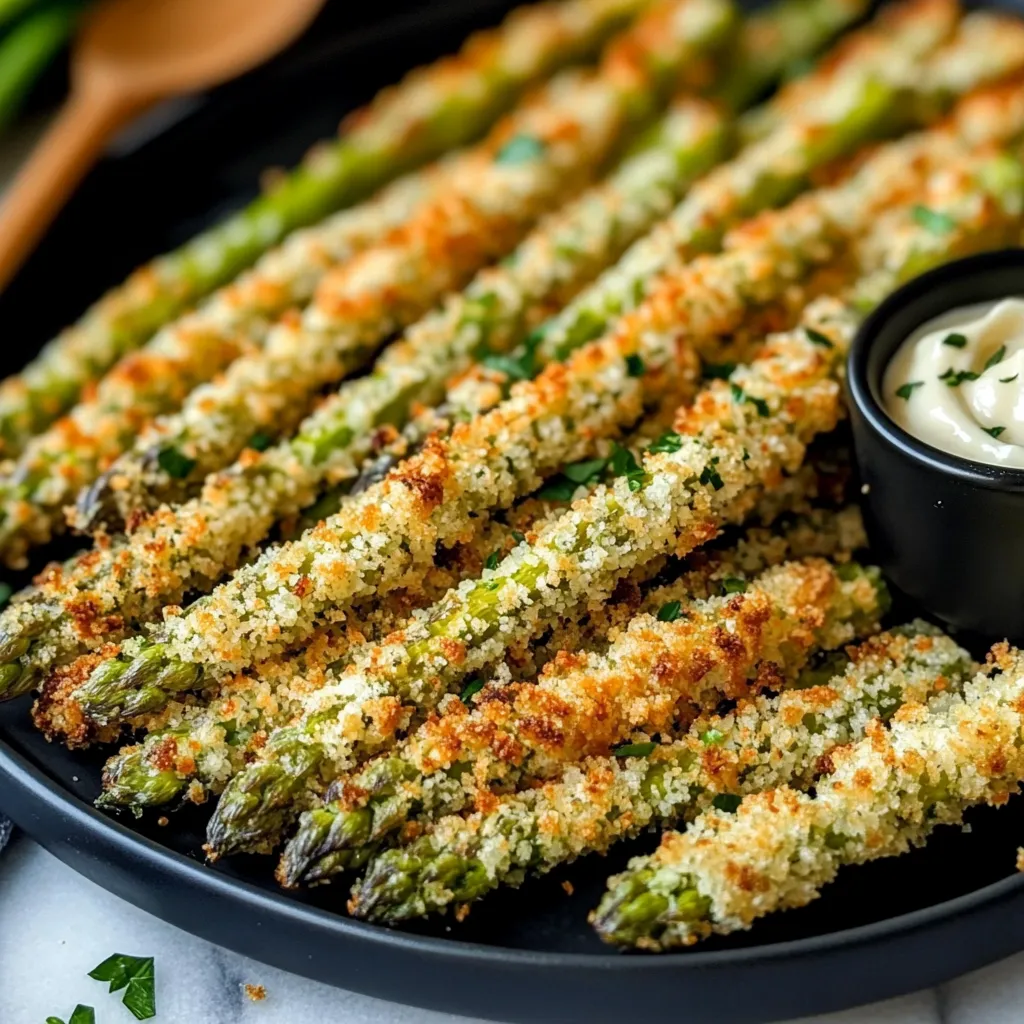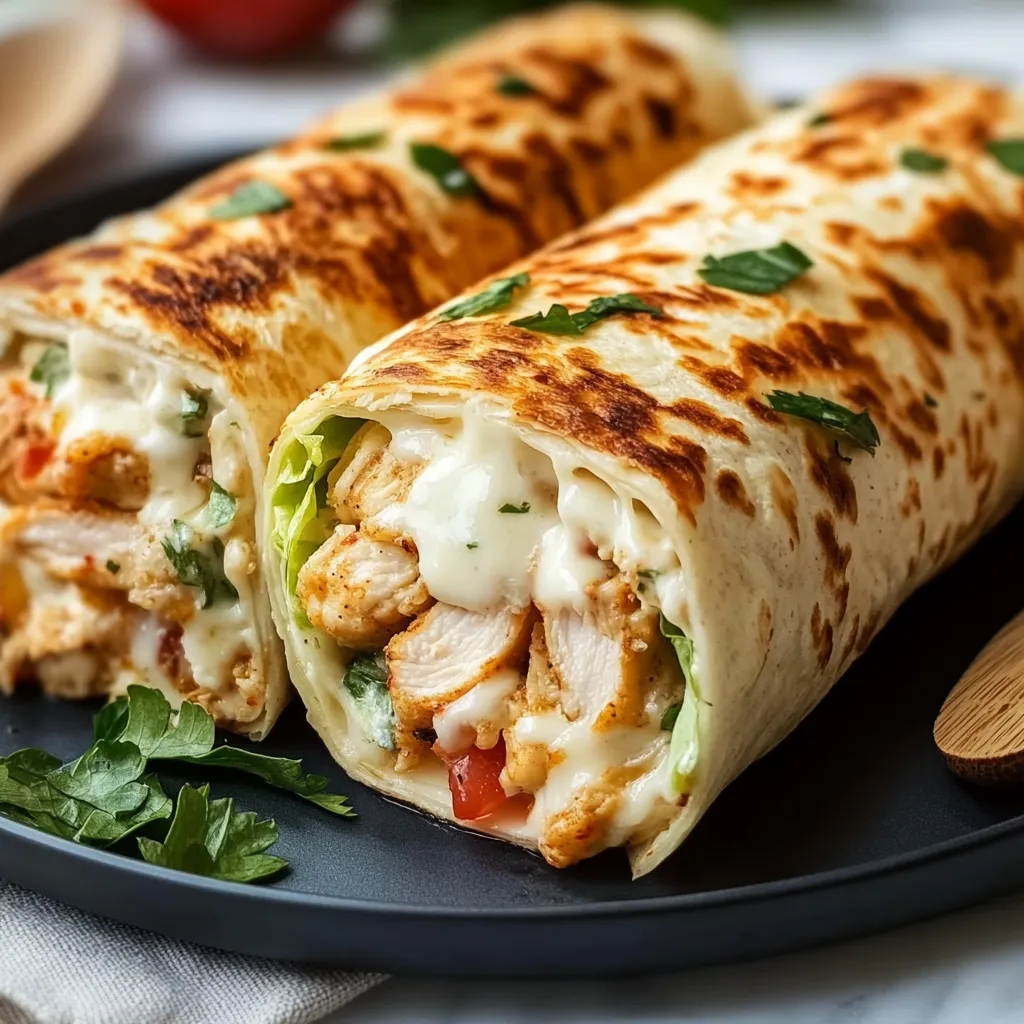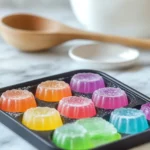Brownies are a decadent, three-layered dessert that has taken the baking world by storm. The origins of these indulgent treats can be traced back to the early 2010s when food bloggers began sharing this over-the-top combination of chocolate chip cookies, Oreos, and brownies. The name “Brownies” is believed to have been coined due to their unapologetically rich and indulgent nature, making them in their decadence—no restraint, just pure dessert bliss.
These brownies quickly gained popularity on social media platforms like Pinterest and Instagram, where their eye-catching layers and mouthwatering appeal captivated bakers and dessert lovers alike. Today, Brownies are a staple in the world of viral recipes, loved for their ease of preparation and the irresistible combination of flavors and textures that satisfy any sweet tooth. Their continued popularity is a testament to their universal appeal and sheer deliciousness.
Overview of Brownies
Brownies are a deliciously indulgent dessert made up of three distinct layers that together create a symphony of flavors and textures. The base layer consists of a soft and chewy chocolate chip cookie dough, followed by a middle layer of crunchy, chocolatey Oreo cookies. Topping it all off is a rich, fudgy brownie layer that ties everything together. The combination of these layers results in a dessert that is both crispy and gooey, with each bite offering a mix of flavors that satisfy any sweet craving.
The appeal of Brownies lies in the seamless blend of classic treats: the comfort of chocolate chip cookies, the familiar crunch of Oreos, and the indulgence of brownies. This dessert has also sparked creativity among bakers, leading to numerous variations such as using different flavors of Oreos, adding caramel or peanut butter, or even making gluten-free or vegan versions, showcasing the versatility and endless possibilities of Brownies.
Ingredients for Chocolate Chip Cookie Layer
The chocolate chip cookie layer is the foundation of Brownies, and each ingredient plays a crucial role in achieving the perfect texture and flavor. Butter is the cornerstone of this layer, and using unsalted butter is key to controlling the salt content of the dough. The butter should be softened to room temperature, ensuring it mixes smoothly with the sugars and creates a creamy consistency that contributes to a tender, chewy cookie base.
Sugars are another vital component, with both brown sugar and white sugar used in this recipe. Brown sugar adds moisture and a rich, caramel-like flavor, while white sugar contributes to the cookie’s sweetness and crisp edges. The combination of the two sugars creates a balanced texture that’s both soft and slightly crispy.
Egg and egg yolk are used to bind the ingredients together and add moisture. The additional egg yolk, without the white, enhances the richness and chewiness of the cookie layer. Vanilla extract is essential for adding depth and warmth to the flavor profile.
Flour and salt must be measured accurately to ensure the dough isn’t too dense or too crumbly. All-purpose flour provides structure, while a pinch of salt balances the sweetness. Finally, chocolate chips are the star of the cookie layer, and choosing high-quality chips, whether semi-sweet or dark, enhances the overall flavor. For dietary adjustments, gluten-free flour can be substituted in a 1:1 ratio, ensuring that everyone can enjoy this decadent dessert.
Ingredients for Oreo Layer
Oreo cookies are the perfect choice for the middle layer of Brownies due to their crunchy texture and intense chocolate flavor, which contrasts beautifully with the soft cookie and brownie layers. They add a satisfying bite and a burst of creaminess from the filling. For those with dietary needs, alternatives like gluten-free Oreos or other sandwich cookies can be used without compromising on taste.
When arranging Oreos, ensure even coverage by placing them in a single layer across the cookie dough, slightly pressing them in to create a uniform base that supports the brownie layer above.
Ingredients for Brownie Layer
The brownie layer is the crowning glory of Brownies, providing a rich, fudgy contrast to the cookie and Oreo layers. Starting with butter and dark chocolate is essential—using unsalted butter helps control the overall salt content, while dark or semi-sweet chocolate adds a deep, intense cocoa flavor. Dark chocolate (50-70% cocoa) is ideal for achieving a balanced sweetness that complements the layers beneath it without overwhelming them.
Granulated sugar is crucial in the brownie layer as it not only sweetens the batter but also helps create a moist, tender crumb. The amount of sugar can be adjusted to suit your taste, but keep in mind that too little sugar may result in a denser, less tender brownie.
Eggs play a key role in creating the desired fudgy texture. They act as a binding agent and provide the moisture needed to keep the brownie layer rich and dense. For an extra fudgy result, be careful not to overbeat the eggs, as this can introduce too much air, leading to a cakier texture.
The combination of flour, cocoa powder, and salt determines the brownie’s structure. A small amount of flour ensures the brownie stays dense and fudgy, while cocoa powder enhances the chocolate flavor. Adding salt balances the sweetness and brings out the rich cocoa notes. If you prefer a less sweet brownie, consider reducing the sugar slightly or using a higher percentage of dark chocolate for a more bittersweet flavor. For those with dietary restrictions, gluten-free flour can be substituted without significantly affecting the texture.
Step-by-Step Guide and Baking Tips
Preparation Steps Before Baking
Preheating the oven is crucial for baking Brownies. Preheating ensures the oven reaches the correct temperature before your brownies go in, which is essential for even cooking and achieving the desired texture. Set your oven to 350°F (180°C) and allow it to fully preheat while you prepare the ingredients.
Greasing the pan is another important step. A greased pan prevents the brownies from sticking, ensuring easy removal and cleaner slices. For best results, lightly grease the pan with butter or non-stick spray. However, for an extra layer of insurance and ease, lining the pan with parchment paper is recommended. The parchment paper should have an overhang on the sides, which allows you to lift the entire slab of brownies out of the pan once cooled. This method not only simplifies removal but also makes cutting into neat squares much easier.
Using the correct size and type of baking pan is vital for achieving the right thickness and texture. A 9×13 inch (23×33 cm) metal or glass baking pan is ideal. A metal pan generally conducts heat more evenly, resulting in uniformly baked brownies, while a glass pan may require slight adjustments in baking time.
Making the Chocolate Chip Cookie Layer
To achieve the perfect consistency for your chocolate chip cookie dough, begin by creaming the softened unsalted butter with both brown and white sugars until the mixture is light and fluffy. This process incorporates air, which helps create a tender and chewy texture. Use an electric mixer on medium speed for this step, ensuring the butter and sugars are fully combined.
Once creamed, add the egg, egg yolk, and vanilla extract. The egg yolk adds richness and moisture, contributing to the chewy texture of the cookie layer. Mix on low speed until just combined to avoid overworking the dough, which can make the cookies tough.
Next, gradually add the flour and salt. Mixing on low speed ensures the flour is incorporated without over-mixing. The dough should be soft but not sticky. If it’s too dry, you can add a teaspoon of milk or water. If too wet, a little extra flour will help.
Incorporating the chocolate chips evenly throughout the dough is essential for consistent bites of chocolate. Use a spatula or wooden spoon to gently fold the chips into the dough.
When spreading the dough in the prepared pan, use a spatula to ensure an even layer. Press gently to cover the entire bottom of the pan. If the dough is sticking to the spatula, lightly wetting it can help spread the dough more smoothly.
Common issues include dough that’s too dry (add a little milk) or too wet (add more flour). If the dough is difficult to spread, let it rest for a few minutes to soften further.
Creating the Oreo Layer
Arranging the Oreos in the pan is a simple but important step. Lay the Oreos flat on top of the cookie dough layer, ensuring maximum coverage by arranging them in rows. For a standard 9×13 inch pan, you’ll likely fit 7 rows of 4 Oreos, with a few halves filling in any gaps. This ensures that each slice of Brownies has a good distribution of Oreos.
When pressing the Oreos into the dough, apply gentle pressure just enough to embed them slightly into the cookie dough. They should sit securely in place but not be fully submerged. This helps the layers adhere together during baking.
For an added twist, consider using flavored Oreos (like mint or peanut butter) to introduce new flavors, or add a thin layer of peanut butter or Nutella on top of the Oreos before adding the brownie batter for an extra indulgent treat.
Making the Brownie Batter
To make the brownie batter, begin by melting the butter and dark chocolate together. You can do this either in a microwave or on the stovetop. For the microwave method, use a heatproof bowl and microwave in 45-second intervals on medium power, stirring between each interval until the chocolate and butter are fully melted and smooth. Be cautious not to overheat, as this can cause the chocolate to seize and become grainy.
If using the stovetop method, place the butter and chocolate in a heatproof bowl set over a pot of simmering water (double boiler method). Stir continuously until the mixture is smooth and melted. Once melted, let the mixture cool slightly before proceeding to avoid scrambling the eggs in the next step.
In a separate bowl, whisk the eggs and granulated sugar together until well combined. The sugar not only sweetens the batter but also contributes to the moist, fudgy texture of the brownies. Gradually add the slightly cooled chocolate mixture to the egg and sugar mixture, whisking constantly to create a smooth batter.
Next, sift together the flour, cocoa powder, and salt to ensure there are no lumps. Sifting also helps to evenly distribute the cocoa powder, enhancing the chocolate flavor throughout the brownies. Gently fold the dry ingredients into the wet mixture using a spatula, mixing until just combined. Be careful not to overmix, as this can lead to a cakier texture rather than the desired fudginess.
To layer the brownie batter over the Oreo layer, drop spoonfuls of batter evenly across the pan. This makes it easier to spread the batter without disturbing the Oreos beneath. Use a spatula to smooth the batter, ensuring it completely covers the Oreos.
To achieve the perfect consistency, remember that less mixing results in a fudgier brownie. For a cakier texture, you can beat the batter slightly more. Additionally, you can adjust the sugar quantity depending on your sweetness preference—reducing sugar will result in a more bittersweet brownie.
Baking the Brownies
When baking Brownies, setting the oven to the right temperature and timing is crucial for the best results. Bake at 350°F (180°C) for 37-45 minutes. The exact time may vary depending on your oven and the desired texture of your brownies.
To check for doneness, insert a toothpick into the center of the brownies. If it comes out with a few moist crumbs, the brownies are done. If it comes out wet with batter, they need more time. For those who prefer a gooier texture, aim for the lower end of the baking time, while those who prefer a more set brownie should bake closer to the 45-minute mark.
Common mistakes include underbaking or overbaking. Underbaking can lead to overly gooey brownies that are difficult to cut, while overbaking can result in a dry, crumbly texture. To avoid these issues, keep a close eye on the brownies in the last few minutes of baking and use the toothpick test as your guide.
Cooling and Slicing
Allowing the Brownies to cool completely before slicing is essential for achieving clean, even squares. Cooling helps the layers set, making it easier to cut without the brownies falling apart. Ideally, let the brownies cool in the pan for at least 4 hours or until completely cool to the touch.
To remove the brownies from the pan, use the parchment paper overhangs to lift the entire slab out and transfer it to a cutting board. This prevents the brownies from sticking to the pan and ensures neat edges.
For cutting, use a sharp knife, and clean the blade between cuts to maintain clean lines. If the brownies are particularly gooey, you can chill them in the refrigerator for 20-30 minutes before slicing to firm them up slightly, making them easier to cut into even squares or rectangles.
Storage and Serving Suggestions
To maintain the freshness of Brownies, store leftovers in an airtight container at room temperature for up to 4 days. If you want to keep them longer, they can be refrigerated for up to a week, though this may slightly alter their texture, making them firmer.
For serving, consider cutting the brownies into smaller squares, as they are rich and indulgent, making smaller portions more satisfying. Serve them as they are, or warm them slightly in the microwave for a few seconds to enjoy the chocolate chips and brownie layer at their gooey best.
To reheat, place a single brownie on a microwave-safe plate and heat for 10-15 seconds. This softens the brownie and enhances the flavors, especially if served with a scoop of vanilla ice cream or a drizzle of caramel sauce.
Creative Variations and Add-Ons
Brownies are incredibly versatile, allowing for numerous creative variations. For an extra indulgent treat, consider adding toppings like a drizzle of caramel sauce, a sprinkle of sea salt, or a dusting of powdered sugar. These additions can elevate the flavors and add a touch of elegance.
You can also experiment with different flavors of cookies and brownies. For example, using peanut butter cookies as the base instead of chocolate chip can add a rich, nutty flavor. Alternatively, try swapping the traditional brownie layer with a blondie or red velvet brownie for a fun twist.
For a festive touch, add colorful sprinkles to the brownie batter or on top before baking, making them perfect for celebrations or holidays.
If you’re looking for healthier alternatives, consider using whole wheat flour in the cookie dough, reducing the sugar content slightly, or using dark chocolate with a higher cocoa content for a less sweet but richer flavor. You can also incorporate nuts or dried fruit into the cookie dough or brownie layer for added texture and nutrition.
Frequently Asked Questions (FAQs)
Can I make Brownies ahead of time?
Yes, Brownies can be made ahead of time. They actually taste even better the next day as the flavors have more time to meld. Store them in an airtight container at room temperature for up to 4 days, or refrigerate them for up to a week.
Can I freeze Brownies?
Absolutely! Brownies freeze well. After cooling completely, cut them into squares and wrap each piece in plastic wrap. Place the wrapped brownies in a freezer-safe bag or container and freeze for up to 3 months. Thaw them at room temperature before serving.
What’s the best way to cut Brownies cleanly?
For clean cuts, let the brownies cool completely, ideally for several hours. Use a sharp knife, and wipe the blade clean between cuts. For extra clean slices, chill the brownies in the refrigerator for 20-30 minutes before cutting.
Can I use store-bought brownie mix instead?
Yes, you can use store-bought brownie mix for convenience. Prepare the mix according to the package instructions and use it in place of the homemade brownie layer. The results will still be delicious.
How can I make these brownies gluten-free?
To make Brownies gluten-free, use a gluten-free flour blend in the chocolate chip cookie dough and a gluten-free brownie mix. Also, replace the Oreos with gluten-free sandwich cookies.
What should I do if my brownies are too dry or too gooey?
If your brownies are too dry, it may be due to overbaking. Next time, reduce the baking time slightly or check for doneness earlier. If they are too gooey, they may need a few more minutes in the oven. Ensure your oven is calibrated correctly, and use the toothpick test to check for the right consistency.

Brownies
Description
Brownies are a rich, three-layered dessert that combines the best of chocolate chip cookies, Oreo cookies, and fudgy brownies into one indulgent treat. The layers come together to create a deliciously gooey, crunchy, and chocolaty dessert that is perfect for any occasion. This recipe is a favorite among chocolate lovers and is sure to impress at any gathering.
Ingredients
Chocolate Chip Cookie Layer:
- 3/4 cup unsalted butter (168 grams), softened
- 1/2 cup brown sugar (105 grams)
- 1/2 cup white sugar (100 grams)
- 1 large egg
- 1 large egg yolk (discard the white)
- 1 teaspoon vanilla extract
- 1 1/2 cups all-purpose flour (188 grams)
- 1/4 teaspoon salt
- 2/3 cups chocolate chips (120 grams)
Oreo Layer:
- 28 Oreo cookies
Brownie Layer:
- 1/2 cup unsalted butter (112 grams), cubed
- 6 oz dark chocolate (170 grams), 50-70% or semi-sweet
- 1 cup granulated sugar (200 grams)
- 2 large eggs
- 1/2 cup all-purpose flour (63 grams)
- 1/4 cup cocoa powder (23 grams)
- 1/2 teaspoon salt
Instructions
1. Preheat the Oven: Preheat your oven to 350°F (180°C). Lightly grease a 9×13 inch (23×33 cm) pan and line it with parchment paper, leaving an overhang on the sides for easy removal.
2. Make the Chocolate Chip Cookie Layer:
- In a large bowl, beat together the softened butter, brown sugar, and white sugar until well combined and fluffy.
- Add the egg, egg yolk, and vanilla extract. Mix until just combined.
- Gradually mix in the flour and salt until a dough forms. Be careful not to overmix.
- Fold in the chocolate chips evenly throughout the dough.
- Spread the cookie dough evenly across the bottom of the prepared pan using a spatula.
3. Add the Oreo Layer:
- Arrange the Oreo cookies in a single layer on top of the cookie dough, pressing them gently into the dough. Ensure the Oreos cover the entire surface.
4. Make the Brownie Layer:
- Melt the butter and dark chocolate together, either in a microwave at 45-second intervals or using the double boiler method. Stir until smooth and let cool slightly.
- In a separate bowl, whisk together the eggs and granulated sugar until combined.
- Gradually add the melted chocolate mixture to the egg mixture, whisking continuously.
- Sift together the flour, cocoa powder, and salt. Fold these dry ingredients into the wet mixture until just combined.
- Drop spoonfuls of the brownie batter over the Oreo layer and spread evenly with a spatula.
5. Bake the Brownies:
- Bake in the preheated oven for 37-45 minutes, or until a toothpick inserted into the center comes out with a few moist crumbs.
- Allow the brownies to cool completely in the pan, at least 4 hours.
6. Slice and Serve:
- Once cooled, use the parchment paper overhang to lift the brownies out of the pan. Place on a cutting board and slice into squares or rectangles.
- Store any leftovers in an airtight container at room temperature for up to 4 days, or freeze for up to 3 months.
Notes
- This recipe is highly customizable—feel free to experiment with different types of Oreos, add your favorite toppings, or even make a gluten-free version. The key to success is to follow the layering and baking instructions carefully to ensure each layer bakes to perfection.
- Adjust the baking time depending on how gooey you like your brownies.
- For a twist, try using flavored Oreos or adding a layer of peanut butter before the brownie layer.









